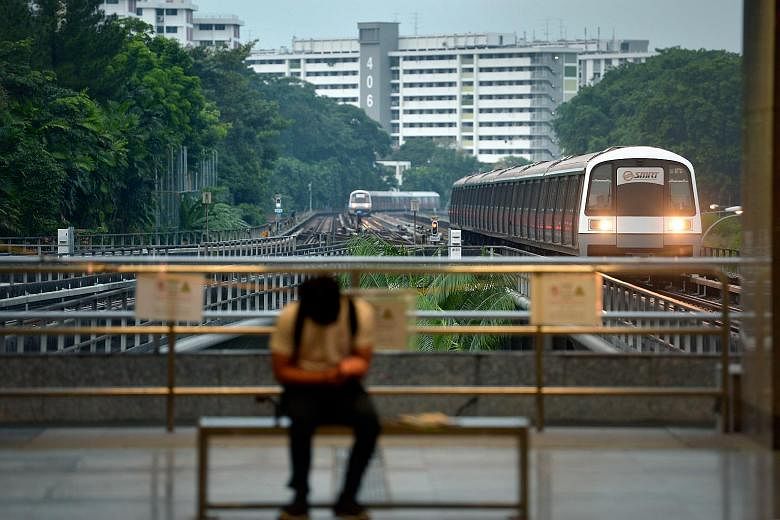The frequency and speed of trains were back to normal yesterday, as commuters went about their daily journeys during the morning and evening peak hours.
Some had left for work about an hour earlier in the morning, for fear that they might be caught in another train breakdown, following Singapore's worst service disruptions on Tuesday evening.
An estimated 250,000 commuters were affected that night after power trips shut down train services on the North-South and East-West lines - the oldest and most heavily used lines - for more than two hours.
Logistics executive Crystal Kwek, 31, who works in Tanjong Pagar, left for work an hour early. She said: "I don't want to get caught (in a breakdown) again."
During the disruption, she took four hours to get home from Orchard to Jurong East. Her boyfriend picked her up after her failed hour-long attempt to hail a cab. The train journey would usually have taken her about an hour.
Product manager Mark Zhang, 32, who was travelling from Clementi to Tanjong Pagar, did likewise. He said: "I didn't want to be late for my sales meeting or show up looking dishevelled and frantic, as I would have if the train had broken down again."
Operator SMRT Corp had planned to shut down train services on the North-South Line between 11am and 4pm yesterday, to conduct further investigations into the causes of the power trips.
But it opted not to after there were no power trips in the morning, said the Land Transport Authority (LTA). There were no power trips during the evening peak period either, as trains ran smoothly.
When The Straits Times visited five stations on the two affected lines, such as Bishan, Tampines and Raffles Place, yesterday between 7am and 11am, trains came every two to six minutes. The frequency was similar at Braddell and City Hall in the evening.
Most commuters felt little difference. "I didn't think the train was moving any slower or came later than usual," said Ms Kwek at Tanjong Pagar in the morning.
But a few commuters complained of trains slowing down or stopping.
Freelance musician Goh Shunta, 25, was travelling from Tampines to City Hall.
He said: "It seemed to slow down along the East-West Line. At one station, it stopped for about a minute or so, and there was an announcement that the train in front had not moved off."
Civil servant Shafiq Mat Noor, 37, said his train was slow and service was disrupted intermittently between Bishan and Ang Mo Kio.
"I woke up at my usual time of 5am and it usually takes two hours to get to my workplace in Pasir Ris, but it looks like I will be late by half an hour," he said.
Transport Minister Lui Tuck Yew went to Ang Mo Kio station at about 7.15am yesterday, where he spoke to reporters and apologised to commuters for the disruption.
Said Mr Lui: "As with every major disruption, there will be a period of time before we can fully regain confidence (from commuters)."

In a statement last night, LTA said 119 trains have been deployed across both lines.
It added that rail engineers have tried to "systematically identify the root cause" of the disruptions over the course of Tuesday night, and that it will continue to monitor operations till the end of train service last night.
The looming possibility of another service disruption caused some to think twice about travelling. Housewife Endora Neo, 48, put off plans to visit her mother at Yishun yesterday. She said: "I'm not sure if they will stop the trains or not. If they do, how am I going to get back? It's so inconvenient."
•Additional reporting by Lim Yi Han and Danson Cheong

